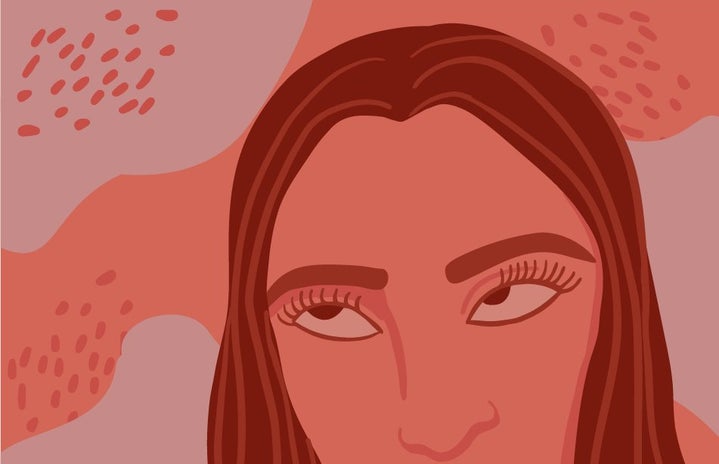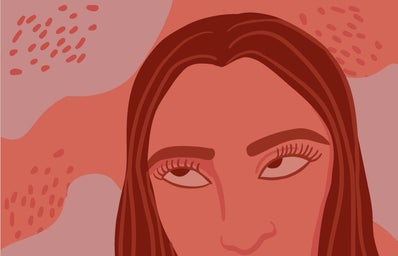Many people grew up watching hit series and sitcoms on television networks, Nickelodeon, and Disney Channel. Beloved shows such as iCarly, Sam and Cat, Victorious, Girl Meets World, and Good Luck Charlie are still being rewatched today. Recently, Netflix, being the main source of cinematic consumption for the targeted generation, released the first two seasons of iCarly on their platform, including having Victorious available to stream already. These releases have sparked new attention to the writings of the show.
Upon observation and many years of my attention paid to my television screen, I have recognized a certain teenage-girl trope that many main characters in these shows embody. Girl Meets World, a spin-off of the earlier treasured sit-com, Boy Meets World, became my favorite show. I adored both Boy Meets World and Girl Meets World, and was saddened by Girl Meets World’s cancellation after a mere three seasons. After a couple years of learning societal expectations and feminist theories, rewatching my favorite kids shows revealed a layer that should get talked about in real life. Riley Matthews, the main character, is a quirky, bubbly, bright-eyed teenage girl learning how to navigate her own take on the world with the help of her fearless friends and parents. Riley is portrayed in seasons 1 and 2 as a bright, intelligent, loving individual. Later in season 3, fans (including myself) noticed Riley’s portrayal as she grows in age is slightly neglected and objectified. Instead of episodes focusing on Riley’s life lessons, Riley is used as a comedic background to make the show softer, as her voice is dulled. Each episode in the last season has Riley focused more on the people around her than the introspectiveness shown from the start, and only expresses jokes and quirks. She is even seen to dress less like her own style, indicating that the writers neglected Riley’s coming of age in the end, submitting her to a shell of herself than a whole person with multiple dimensions of character.
Teenage girls are often overlooked, underestimated, and objectified from extremely young ages. Starting as early as elementary school, girls regularly face double standards in athletic ability and dress codes, which embeds the idea that teenage girls are weak, emotional, and less deserving of space than others (particularly male counterparts). Later, more issues stem from this in political debates, societal expectations, and workforce compensation. A big issue in society today is how much space women, especially young girls, are allowed to take up. One can ponder how extensively these television shows ended up shaping an overall outlook on women.
In both Victorious and Sam and Cat, the main character, Cat, a bubbly sweetheart and phenomenal singer played by Ariana Grande, is a character whose only personality is based being oblivious to basic facts and information, following her adventurous pals in their schemes. In Sam and Cat, Sam is portrayed solely as a tough and aggressive troubled teen with no chance to enjoy softer aspects of herself or to explore vulnerability.

Teenage girls, and teenagers in general, go through a tremendous amount of change, emotionally, physically, and socially, and build a certain level of resilience because of this. Exploring every dimension of who they are is vital to teaching kids how to deal with emotions and celebrate the entirety of their personalities in a healthy manner. With subliminal messages sent to teenage girls that normalize bullying and suppression, teenage girls then lack the number of female protagonists they can relate with and look up to as role models. The feminine experience is put in harm’s way, allowing society to continue its hate for feelings and femininity.
It is not just the written universe that is affected, however; the actors behind the roles wind up hindered in their own ability to mentally grow at their own rate.
In iCarly, the main female protagonist, Carly, was allowed to be sensitive, but oftentimes that is all she was. In an episode where Carly wanted to tag along to Sam’s antics, or learn how to prank her friends, Carly was laughed at and not taken seriously right off the bat. There is a certain kind of exclusion the characters face but are expected to normalize the treatment and accept that belittling behavior. There were also many instances where Carly’s portrayer, Miranda Cosgrove, was put in uncomfortable situations by Nickelodeon’s head creator, Dan Schnieder. Many Nickelodeon shows, including a lot of iCarly scenes, show questionable adult lines and behaviors that raise red flags for viewers now that they’re older.
Carly’s best friend, Sam Puckett (and the same character from Sam and Cat), lives her teenagehood in the show as being bold, troublesome, adventurous, and physically smaller than her friends and does not exhibit any emotional sensitivity, as most young girls do. The actor behind the female protagonist, Jennette McCurdy, even talks on podcasts now about what her work was like. Jennette opens up about her own emotional sensitivity and how the expectations her young fans had when meeting her were not met because of her own separate sensitivities. There was a certain overlap from this idealized rebel character to the actual nature of Jennette McCurdy. Jennette also talks about her own childhood trauma and eating disorder experience on her own podcast, Empty Inside. She was influenced by her mom and media that taught her she could book more roles – sadly seeming more worthy – by staying at a smaller size.

Fans of Disney have expressed the pattern where Disney tends to cast overweight girls and girls of color to be the “token” best friend of the main character. In Good Luck Charlie, Ivy is the overweight Black best friend of Teddy. In Austin and Ally, Trish is the overweight Latina best friend of Ally. These are all well-known shows on the Disney Channel; the channel who never seems to write other shows, or even episodes, fitted around more diverse characters. There will always be a lack of representation in female protagonists as long as people of color and girls of all sizes are only chosen to fit certain background characters.
All in all, there are hidden shallows within the character dynamics of our favorite childhood television shows. Kids observe their favorite characters, but they often go unexposed to the realities of being a teenager and walking through the complexities of growing into a unique personality. There is a certain amount of intelligence placed on certain girls, forming a sort of dope trope. These characters are either “dopes” in the eyes of their peers, or they are expected to be trapped in another level of characterization. Particularly, for young girls and female protagonists, there is a major lack of mental, emotional, and physical representation from network to network. Exclusive teachings should not be infiltrating the malleable minds of young generations, who will later be called to unlearn these stereotypes in life.



